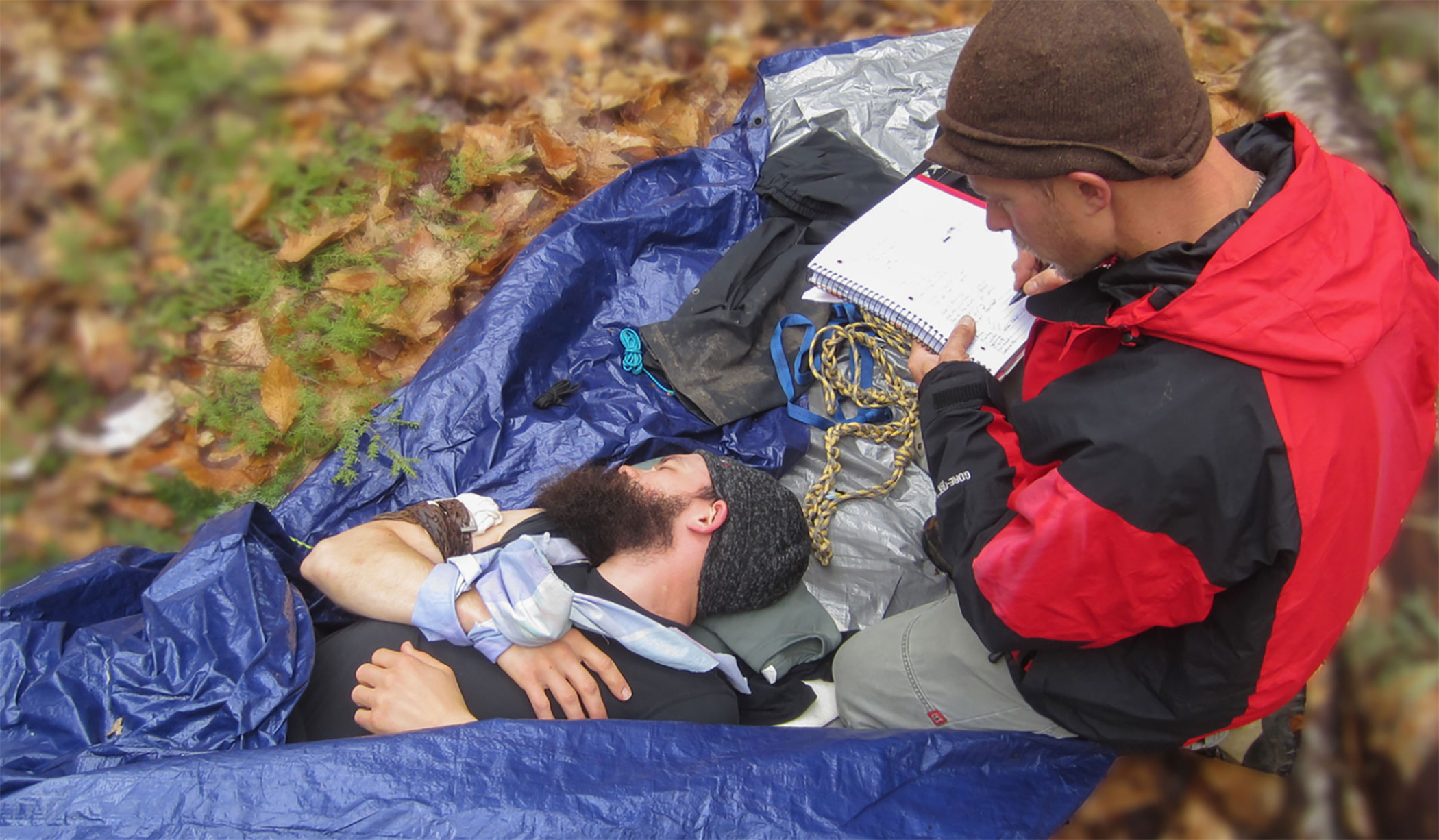
Image via SOLO Schools
For many of us, the great outdoors is our playground. It is where we go to relax or exercise while taking in the fresh air and beautiful scenery. As much as we want the outdoors to be our place of bliss, injuries can, and do, happen. While some outdoor adventures are more risky than others (think backcountry skiing verses a short hike) anyone going into the backcountry should be prepared with some basic wilderness first aid skills, especially when out of cell phone signal range.
But wilderness medical skills often require specialized hands-on training that can be more intense than basic or online medical courses. Should the need arise in an emergency situation, you’ll be glad you invested that extra time.
Everyday First Aid vs. Wilderness First Aid
Many folks are first aid certified through the Red Cross or a similar organization. While some first aid training is better than none, there is a distinct difference between aiding someone when EMS is five minutes away verses helping someone who is three days into the backcountry.
Typical first aid classes focus on immediate care that is surrendered to EMS as soon as they arrive, usually within a five- to 15-minute window. In a wilderness setting, your care as a first responder is extended beyond that window and requires a deeper level of knowledge, patient assessment, and evaluation.

Image by Fotopogledi, Shutterstock
Much of wilderness first aid is taking care of the immediate issue (for example, stopping bleeding) and then determining the state of the patient and severity of the injury. In a wilderness medicine course, you learn all the skills to make this evaluation and are educated how to determine if a patient can stay with you in the backcountry, whether they can self-evacuate, or if calling for a rescue is needed.
Below are examples of all three scenarios. Reminder that this is in no way an exhaustive list, and each patient’s situation is unique and needs to be addressed individually.
Stay: This person has a minor injury and can continue on the adventure.
Example: A cut on their knee that is no longer bleeding and is properly cleaned and bandaged.
Self-Evacuation: This person needs to leave the adventure to seek medical care but is stable and healthy enough to evacuate without help from a rescue team.
Example: A person has broken their arm. The arm has been splinted, and they are able to hike back to their vehicle or a nearby trailhead without a rescue crew.
Rapid Evacuation: This patient is having a major medical emergency that requires immediate rescue to be taken to advanced medical care.
Example: This kind of situation includes uncontrolled bleeding, severe dehydration, or a cardiac emergency.
In addition to learning how to make this determination, wilderness medicine courses show you how to give a proper and thorough patient report to incoming rescuers to aid them in their rescue.
Wilderness First Aid (WFA) vs. Wilderness First Responder (WFR)
As you research different wilderness medicine course options you will notice there are two courses with similar names, wilderness first aid and wilderness first responder. WFA is typically a two-day course with a general overview of basic wilderness medicine. WFR is a more extensive course, lasting 70 to 80 hours, and goes deeper into medical knowledge and scenarios. To further explore the differences, you can check out a typical WFA curriculum here and a typical WFR curriculum here.
Finding A Course
There are multiple organizations that offer WFA and WFR courses. I completed my training with the National Outdoor Leadership School — you can check out NOLS’ schedule here.
My editor here at ActionHub has previously taken wilderness medicine courses through the American Safety Health Institute and through SOLO Schools.

Image by Aleksey Matrenin, Shutterstock
Whether you are on a short hike or a multi-day expedition, injuries and medical events can happen at anytime. Be prepared on your next adventure with a wilderness medicine certification.
Lauren Loria-Corbat is a writer and photographer who skis, rock climbs, hikes and backpacks. She loves introducing people to outdoor sports through journalism as well as hands-on teaching as a ski and climbing instructor.
 Your Privacy Choices
Your Privacy Choices
 The
The